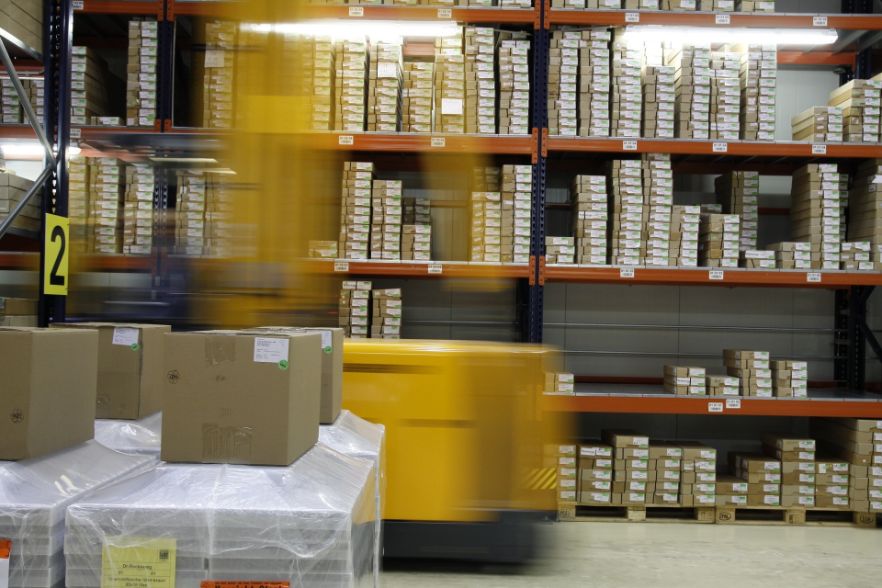18 logistics KPIs you should start tracking in 2026
Logistics KPIs are key indicators for measuring the efficiency of a company's operations.
You've probably heard of them before, and you already know how important it is to make business decisions based on real, objective data. But which KPIs must be monitored for the correct management of your company's logistics?
What is KPI in logistics?
KPIs (Key Performance Indicators) are metrics that determine the efficiency of a company's activities in specific sectors, and one of these is logistics. When it comes to logistics, all transport processes are considered, from the procurement of resources to the delivery to the final customer.
These parameters are therefore fundamental for the correct management of a business, and as logistics costs continue to rise, monitoring them has become a priority for companies of all sizes.
Now let's see what these parameters are and the areas of your business that help observe them closely.
Did you know you can monitor Shipping KPIs using our BI suite?
Why observe logistics KPIs?
Monitoring logistics KPIs allows companies to plan logistics activities based on actual data, track progress of all processes and intervene promptly, if necessary. This leads to improved organizational efficiency and better business management.
Obviously, to achieve these objectives it is important to know exactly which parameters to take into consideration.
The most important logistics KPIs
The main KPIs to monitor for correct logistics management belong to four macro-areas:
- Transport activity
- Resource procurement
- Warehouse management
- Inventory organisation
Let's discover which logistics KPIs to monitor for each of these areas.
Transport activity
- Number of shipments: to understand the volume of shipments to manage.
- Shipping times: to identify problems and/or delays in order fulfilment management.
- Punctuality rate: the number of complete and punctual deliveries out of the total number of deliveries made, to evaluate the efficiency of transport activities.
- Cost per km: the cost of transport in relation to the distance covered in kilometres.
- Fleet Utilisation Rate: the transport capacity used compared to the total fleet capacity.
Resource procurement
- Failed Deliveries: the number of failed or unsuccessful deliveries due to issues with supplier, service, or product quality.
- Supplier compliance: to track the number of products that arrive in the warehouse later than when they were purchased.
- Lead time: the time between placing an order with a supplier and receiving the delivery at the warehouse.
Warehouse management
- Transport cost per sale: to verify the sustainability of the company's logistics costs.
- Total storage cost: the cost of storing all products in the warehouse.
- Storage cost per unit: the relationship between the total storage cost and the number of items in the warehouse during a specific timeframe.
- Productivity: the number of orders fulfilled each day.
- Order handling time: the time between receiving an order and when it leaves the warehouse for delivery to the end customer.
Inventory organisation
- Turnover rate: also called turnover, is the number of times inventory is renewed during a specific timeframe.
- Out-of-Stock: the number of times that demand was greater than supply, so products were out-of-stock, and the company was unable to fulfil orders.
- Inventory accuracy: the number of bad codes out of the total number of codes.
- Inventory concentration: allows you to evaluate the accuracy of the inventory, calculating the relationship between theoretical stock and actual stock in the warehouse.
- Order fulfilment: the number of orders that can be fulfilled out of the total number of orders received.

18 logistics KPIs to monitor
So, what are the KPIs to monitor for accurate logistics management of your business?
- Number of shipments
- Shipping Times
- Punctuality rate
- Cost per km.
- Fleet utilisation rate
- Unsuccessful deliveries
- Supplier compliance
- Lead time
- Transport cost per sale
- Total cost of storage
- Unit storage cost
- Productivity
- Order handling time
- Rotation index
- Out of stock
- Inventory accuracy
- Inventory concentration
- Fulfilment of orders
Conclusion
Each company has its own needs when it comes to logistics, based on their goals and situation.
Depending on the different situations, you may find some of these KPI for warehouse and logistics more useful than others. Undoubtedly, keeping these metrics under control will allow you to manage the logistics of your business as effectively as possible, and intervene promptly if problems arise.
Start analysing your logistics KPIs to optimise your shipments
Logistics KPI: frequently asked questions
What are logistics KPIs?
Logistics KPIs (Key Performance Indicators) are metrics used by companies to measure the performance of their main activities, in this case all transport-related activities, from the procurement of resources to delivery to the final customer.
What are warehouse KPIs?
Warehouse KPIs are indicators that determine whether a warehouse is managed efficiently, both in terms of inventory and input and output of products.
What are the most important KPIs?
The most important KPIs in the logistics sector are the number of shipments, shipping times, the cost of transport for each sale and the punctuality rate.
Passionate freelance copywriter, with a niche in ecommerce and logistics. When collaborating with ShippyPro, she loves writing about trends, marketing and communication strategies to help brands gain an edge in an ever-evolving digital landscape.














